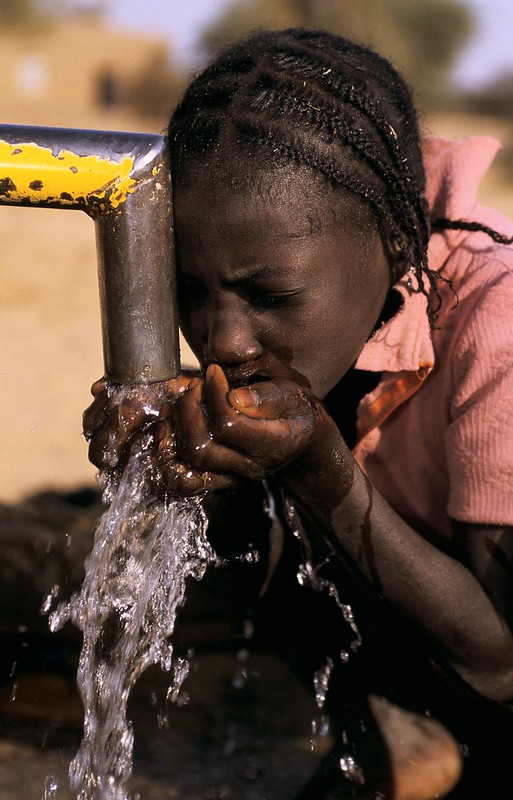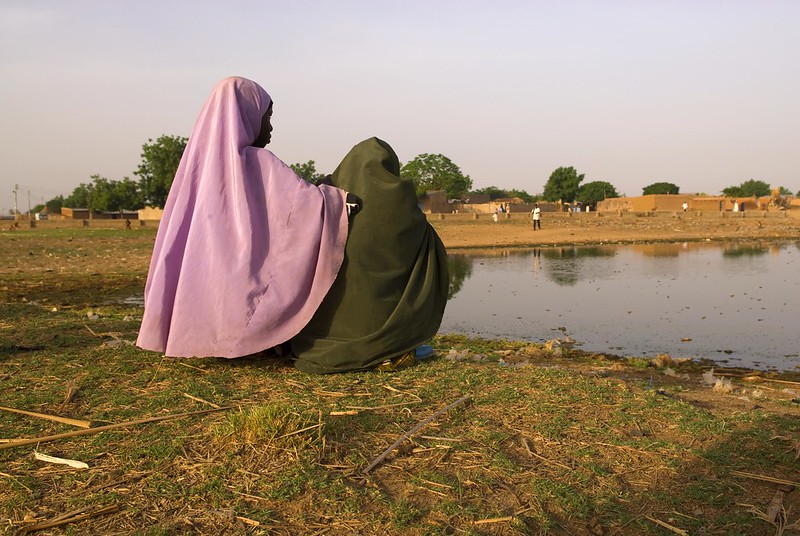Improving the effectiveness and equity of adaptation finance
Improving the effectiveness and equity of adaptation finance
The climate is changing and adaptation is required to reduce our vulnerability to negative impacts. For countries in the developing world where domestic budgets are already constrained, international flows of adaptation finance from donors are critical to support adaptation action. But is there scope to improve the effectiveness of adaptation finance in reducing vulnerability?
A new paper in the journal World Development reviewed 34 projects and over 200 papers, and built on the collective experience of the 20-strong author team, finding that there is scope for us to improve vulnerability reduction if we rethink how we do adaptation interventions.
Authors Katharine Vincent (Kulima Integrated Development Solutions), Siri Eriksen (Norwegian University of Life Sciences), Lisa Schipper (University of Oxford) and Morgan Scoville-Simonds (University of Oslo) describe the highlights of the findings.
The global status of adaptation finance
Recognising the need for adaptation, and the inequity in historical contributions to greenhouse gas emissions that cause climate change, the United Nations Framework for Climate Change – the international policy framework for responding to climate risk – enshrines adaptation finance.
The Copenhagen Accord, signed in 2009, included a goal for achieving $100 billion per year of adaptation finance by 2020. The failure to meet this commitment has brought criticism. Newly appointed US Climate Envoy, John Kerry, announced at this week’s Climate Adaptation Summit that, following their re-entry to the Paris Agreement, the US will “significantly improve the flow of finance” to enable adaptation and resilience.
Of course increases in finance are welcome given the extent of adaptation needs. The most recent Adaptation Gap Report noting that current adaptation costs in developing countries will rise to $140-300 billion in 2030, and $280-500 billion in 2050. But it does also require us to take stock of the effectiveness of adaptation interventions to date, so that we can ensure that this money is reaching those who are most vulnerable.
Reinforcing, redistributing or creating new sources of vulnerability
Whilst adaptation finance-funded projects are typically evaluated in isolation, what has been lacking is a more systematic perspective that looks across examples to distil lessons learned. Doing this, the paper finds that some interventions inadvertently reinforce, redistribute or create new sources of vulnerability. Ultimately this lack of attention to equity ends up reinforcing and increasing social inequality, typically exacerbating existing cleavages, for example along the lines of gender or ethnicity.
Among the reasons for these maladaptive outcomes are a shallow understanding of the vulnerability context; inequitable stakeholder participation in both design and implementation; and a lack of critical engagement with how ‘adaptation success’ is defined.
Reliance on projects
Of course good intentions are there. For adaptation projects to be financed, proposals typically have to show alignment with national priorities, include an assessment of vulnerability, and commit to participation and inclusion, including of women.
But thinking at project scale has its limitations. Defining a geographical scope can lead to the offsite effects not being considered. Damming a river to enable irrigation in one village may increase vulnerability for those downstream.
There is usually a very limited period of time available to assess vulnerability – perhaps only a couple of days in which the team would be able to consult with the target community. Given that every person’s vulnerability will differ reflecting their gender, source of livelihood and level of education (to name a few), this only gives time to scratch the surface and often generalisations have to be made.
Shortness of time also means that it can be easy to prioritise convenience – using local elites (for example community leaders) as entry points into communities, and perhaps overlooking the additional effort required to seek out the more marginalised members who are less visible but should equally have their voices heard in identifying needs and priorities. When this happens, the resulting projects are also inequitable and contribute to reinforcing inequality.
When projects come to an end they are invariably evaluated. However, these evaluations can prioritise looking at whether they did what they said they would do, and whether they did it well. This means they will not actively look for offsite effects and who wasn’t included and how their levels of vulnerability have changed. More importantly the evaluation typically uses up the last part of the project’s budget – leaving nothing to go back a year later and check on the sustainability of the intervention, or consider bigger picture lessons that would usefully inform the effectiveness and equity of the activities.
Ensuring projects are coordinated with a bird’s eye view
Strengthening national level coordination and lesson sharing is key. A bird’s eye view of the landscape of projects is necessary to overcome the risk of vulnerability redistribution, and to ensure effective lesson sharing. This requires some kind of higher level coordination. The national line ministry with responsibility for climate change and adaptation could play this role – like a programmatic approach, but covering a whole country.
Maintaining a repository of outputs and studies, cultivating conversations to identify and reflect on lessons, and ensuring that new projects are designed taking these into account would overcome some of the risks of a fragmented project approach. Having such coordination in place would also make it easier to see if the geographical distribution of projects on aggregate is matching the geographical distribution of vulnerability – highlighting priorities for further interventions to reduce vulnerability
Involving researchers in the design, implementation and evaluation of adaptation projects
Involving researchers in adaptation projects – before, during and after implementation - capitalises on their greater depth of knowledge and capacity to use this to ask a broader range of questions. Project implementation staff are often forced to work quickly and focus on the rollout of planned activities, which leaves them short of time for the deeper, more reflective and critical work where researchers excel.
There are strong and growing communities of adaptation researchers. However, they largely work in parallel to adaptation practitioners and, crucially, those who are designing and implementing projects. Forging partnerships between the two would unlock improved flow of relevant information. Researchers could bring their skills to bear in more in-depth and inclusive vulnerability assessment, and contributing to critical learning from projects that may take place outwith the project’s actual duration – contributing the much needed longer term insights.
Of course both of these options require appropriate funding and institutional mechanisms to be in place. Major adaptation finance providers, whether multilateral funds such as the Green Climate Fund or bilateral donors, such as the UK, Norway, and Germany, could modify the proposal design and evaluation criteria to promote the incentives necessary for this to happen, and consider additional support to enable the national level coordination that increases the effectiveness of their investments.
Adaptation needs are significant, and will continue into the future. With these new findings highlighting opportunities for improvement in adaptation projects reducing vulnerability, it is critical that we make the changes necessary to improve effectiveness and equity.
Images: all courtesy World Bank photo collection


